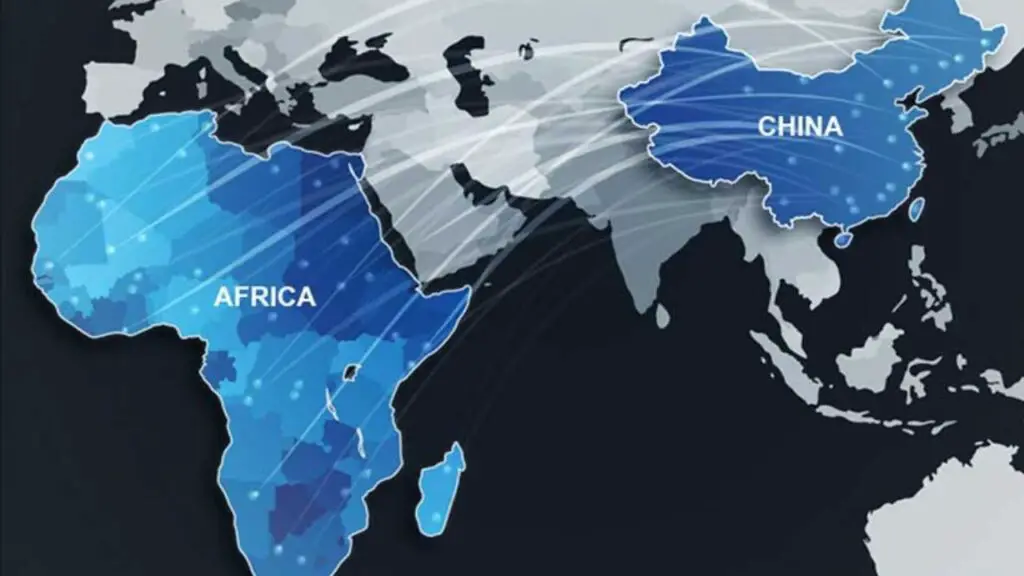China infrastructure in Africa
- US$40 billion in trade finance, commercial investments were announced at the Forum on China-Africa Cooperation (Focac) in late November.
- The actual amount pledged at the two most recent forums in 2015 and 2018 is far less than the US$60bn promised.
- China is moving away from a policy of “hard cash for infrastructure” to “soft collaboration on commerce and human capital.
Analysts claim that China financial commitments to Africa are turning away from large-scale infrastructure projects and toward building greater trade flows and commercial ventures.
An action plan totalling US$40 billion in trade finance, commercial investments, and a share of Chinese Special Drawing Rights (SDRs) was announced at the Forum on China-Africa Cooperation (Focac) in late November.
Despite the eye-catching headline, the actual amount pledged at the two most recent forums in 2015 and 2018 is far less than the US$60bn promised.
Read: China plans digital dominance in Africa via Digital Silk Road
China has used concessional loans to fund a wide range of continent-wide infrastructure projects, including trains, airports, highways, and power plants.
There are growing indications that China is reining down its state-backed investments in Africa since numerous nations are struggling with sovereign debt from non-Chinese sources. The plans revealed accompanied a virtual speech by Chinese President Xi Jinping have strengthened these impressions.”
Non-resident fellow at Brookings in the United States Yun Sun highlighted that China’s Focac promise this year was notable for its absence of any mention of infrastructure.
According to think tank analysts at the Center for Global Development, China is moving away from a policy of “hard cash for infrastructure” and toward one that emphasizes “soft collaboration on commerce and human capital.
According to a Center for Strategic and International Studies (CSIS) research paper, China’s readiness to employ state-backed loans to support its worldwide ambitions has decreased over the past several years.
When asked about the outcome of Focac, a partner at Beijing legal firm Pinsent Masons said, “It wasn’t a surprise.” Although more infrastructure investment is needed in Africa, governments must also ensure that the new infrastructures are put to good use.
This year, the G7 countries and the EU have launched initiatives that are considered as competitors to the Belt and Road Initiative, both of which have a heavy focus on closing the infrastructure capacity gap between rich and poor countries.
China alone cannot solve the infrastructure gap; a global reaction is required, according to Lui.
Read: Pandora Papers: What do Russia & China have to do with Zimbabwe diamonds?
China and all African countries with diplomatic ties to Beijing have agreed on a new action plan that includes a guarantee of $10 billion in trade finance over the next three years to support African exports, which is double the amount dedicated to trade in 2018. Through increased imports from the continent, China hopes to achieve US$300 billion in annual imports by 2024.
In addition, the plan aims to “improve the competitiveness of African agricultural products then facilitate and expedite the entry of small scale agricultural producers into formal processing, marketing and distribution networks. There are also attempts to simplify cross-border trade, including increased digitalisation.
African financial institutions will get a further US$10 billion in credit lines from the African Development Bank (AfDB) to support lending to small and medium-sized companies (SMEs) on the continent.
I think the objective is to combine Chinese liquidity with local competence,” Lui tells the Wall Street Journal.
At least for many African countries, the Belt and Road Initiative is evolving into a more advanced stage.” There are numerous opportunities for the local economy to benefit from the infrastructure that has been put in place, such as roads, ports and airports. Letters of credit and export credit revolving arrangements are likely to be used for the US$10 billion, adds Lui.
The remaining US$10 billion in the package will come from China distributing some of its share of SDRs to countries in Africa without revealing the specifics.
Data from the Boston University Global Development Policy Center shows that China’s public funding for key infrastructure projects has consistently decreased since 2016.
In September, GTR reported that Chinese contractors working on African projects have approached European export credit agencies and commercial lenders since they have been unable to acquire financing from Chinese sources.
The original of this article appeared here.
Read: China strengthening its diplomacy in Africa’s health sector
